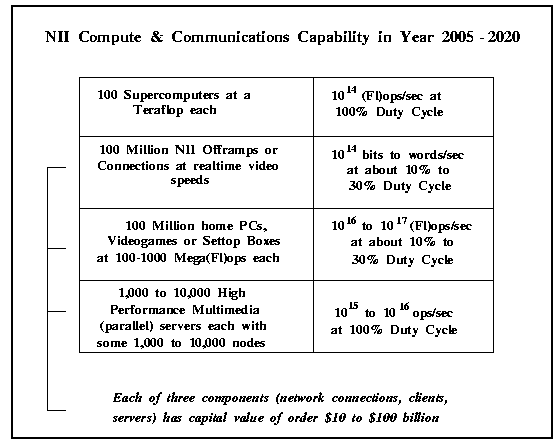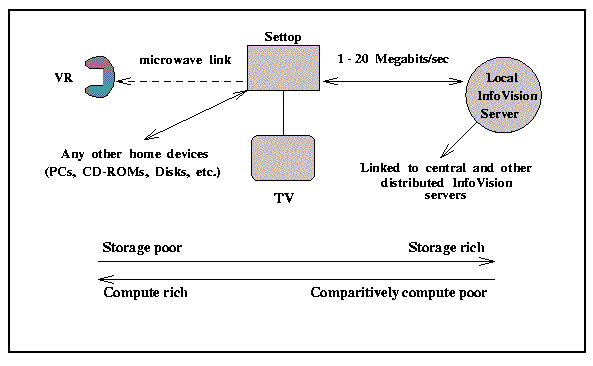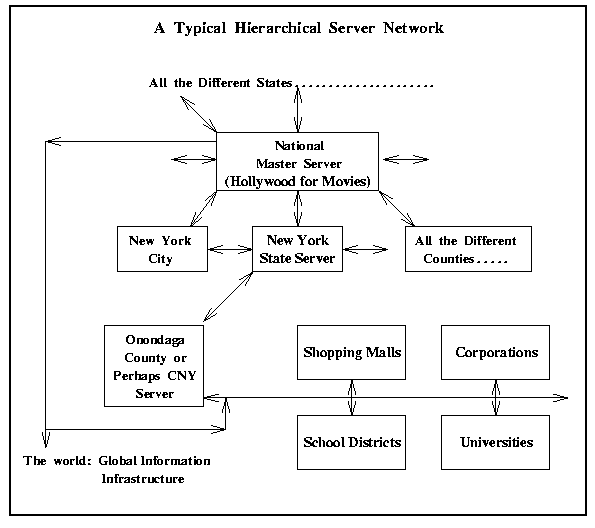
Gordon Bell's SNAP vision [Bell:95a] recognizes that the World Wide Web (NII), parallel supercomputers, and your organization's enterprise network will be built from the same pervasive communication infrastructure--twisted pair, coaxial cable, optical fiber, satellites and cellular phones connecting everybody and every institution together [Fox:97a]. Of course, different parts of this hardware will perform with different speeds and will be upgraded at different times in different parts of the country. However, a similar software base, Web technology, will dominate applications on this diverse infrastructure because it is built for the largest market, and therefore, will best leverage the software development effort into lower costs and higher functionality. Obviously, we now have an imperfect realization of this SNAP vision today, but there is enough infrastructure in pace to create the opportunity now being explored and created by America Online, Netscape, Microsoft, WebTV, and others.
In Figure 5, we estimate the compute and communication capability of the NII and find it 100 to 1,000 times that of conventional supercomputers. However, we expect large-scale parallel processors to be used not only in classic supercomputers, but also in the network of video servers, and more generally, WebServers that supply information to these clients. We term this scenario InfoVISiON for Information, Video, Imagery, and Simulation ON Demand.

Figure 5: An estimate of the communication bandwidth and
compute capability contained in the NII and supercomputer industries
InfoVISiON includes the storage, query, and dissemination of this wide range of multimedia data. There is surely at least 100,000 hours of interesting video material in the archives of Hollywood studios, CNN, Routers, and network TV. If compressed in MPEG format, this corresponds to some 100 Terabytes of needed storage capacity. MPEG2 or other formats, such as motion JPEG, would require much more storage and are probably necessary to support editing and other video production applications. Note that the current WWW has only a small percentage of its storage devoted to video, whereas the future NII will presumably be dominated by video data.
Each NII offramp will, as shown in Figure 6, connect homes (offices, school desks) at the rate of 1-20 Megabits/sec to the set of NII InfoVISiON servers. This rate covers the range from MPEG compressed VHS to HDTV picture quality. Note that this performance is 100-1,000 times greater than today's conventional 28.8 Kbaud modem on a twisted pair (plain old telephone service POTS) connection.

Figure 6: Basic InfoVISiON home scenario in the year
2000: Intelligent settop box interfacing the digital home to a
hierarchical network of InfoVISiON servers
Returning to Figure 5, we estimate that with an investment in large servers that is 10% of that in clients gives an InfoVISiON or WebServer market that is at least an order of magnitude larger than that for traditional supercomputers. This illustrates that it is the NII, and not large-scale number crunching, that is the best opportunity for (high-end) parallel processing. Notice also that the compute power contained in the year 2000 NII is some 10-100 PetaFLOPS--far larger than the compute capability of an individual TeraFLOPS supercomputer. This is explored in more detail in [Bhatia:97a], [Fox:97a], [Fox:97c] which discuss extending the Web to compute services, and harnessing the power of the World Wide Metacomputer.

Figure 7: Typical hierarchical server network for Hollywood
master system cascading down through a fragment of node systems shown for
central New York
One could view this InfoVISiON scenario as the most amazing client-server application with client/small servers and large servers, but as mentioned in Section 2.1, we could instead implement this as a heterogeneous server-server architecture with distributed nodes. This can be viewed as a fascinating parallel computer with many more nodes than traditional tightly coupled systems (by a factor of compared to typical large 1,000 node parallel processor). It appears that although powerful, the communication backbone of Figure 5 will not allow every ``client'' long distance simultaneous access to every other client or server. Rather, we must enforce the guiding principle of all computer architectures--namely, data locality. This is illustrated in Figure 7. When Jurassic Park VI is released on the Hollywood Server, one will not have everybody accessing it there at an average distance of some 1,500 miles. Rather, this ``hot'' movie will be cascaded down (cached) through the hierarchy of servers so that any individual will find it on a server a few miles away. This strategy reduces the needed fiber for the NII trunks by a factor of about 100.